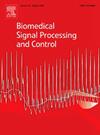Enhancing Mobile Edge Computing customer reviews analysis with Ensemble Sparse Support Vector L1 Regularization Based Crossover Discrete Mycorrhized Algorithm
IF 4.9
2区 医学
Q1 ENGINEERING, BIOMEDICAL
引用次数: 0
Abstract
Mobile Edge Computing has emerged as a transformative technology, enhancing the efficiency of internet community platforms by enabling real-time data processing and analysis at the network’s edge. These platforms facilitate the exchange of user opinions and ideas, providing valuable insights into user attitudes and preferences. Despite advancements in Mobile Edge Computing, challenges persist in effectively categorizing customer reviews due to latency, data scarcity, and overfitting issues in computational models. This study integrates natural language processing techniques with edge computing infrastructure to analyze reviews closer to their source, thereby minimizing latency and improving overall performance. To enhance the detection accuracy in Mobile Edge customer reviews, this paper proposes an innovative approach called the Ensemble Sparse Support Vector L1 Regularization-based Crossover Discrete Mycorrhized Algorithm. Pre-processing steps, such as tokenization, lemmatization, and stemming, are employed to improve data quality. Feature extraction is performed using a stacked autoencoder, which incorporates multiple layers to address data scarcity issues. To optimize the performance of the Sparse Support Vector L1 Regularization, a novel Crossover Discrete Mycorrhized Optimization Algorithm is introduced, mitigating overfitting and improving classification accuracy. The proposed approach is validated using datasets such as the Mobile Recommendation System Dataset, Mobile Positioning Dataset, Mobile Edge Distance Analysis Dataset, International Phone Checker API, and Financial Fraud Detection Dataset. Experimental results demonstrate superior performance, achieving 98.52% accuracy, 98.39% precision, 98.28% recall, and 98.21% F1-score in aspect category detection. The proposed method addresses critical gaps in latency reduction and data processing accuracy in MEC environments by significantly improving reliability and efficiency in customer review analysis. These findings contribute to more robust, customer-centric Mobile Edge Computing systems, fostering enhanced real-time decision-making and user experience.
基于集成稀疏支持向量L1正则化的交叉离散菌根化算法增强移动边缘计算客户评论分析
移动边缘计算已经成为一项变革性技术,通过在网络边缘实现实时数据处理和分析,提高了互联网社区平台的效率。这些平台促进了用户意见和想法的交流,提供了对用户态度和偏好的宝贵见解。尽管移动边缘计算取得了进步,但由于计算模型中的延迟、数据稀缺和过拟合问题,在有效分类客户评论方面仍然存在挑战。本研究将自然语言处理技术与边缘计算基础设施相结合,以分析更接近其来源的评论,从而最大限度地减少延迟并提高整体性能。为了提高移动边缘客户评论的检测精度,本文提出了一种基于集成稀疏支持向量L1正则化的交叉离散菌根化算法。预处理步骤,如标记化、词形化和词干提取,被用来提高数据质量。特征提取使用堆叠自编码器执行,该编码器包含多层以解决数据稀缺问题。为了优化稀疏支持向量L1正则化算法的性能,提出了一种新的交叉离散菌根优化算法,减少了过拟合,提高了分类精度。使用移动推荐系统数据集、移动定位数据集、移动边缘距离分析数据集、国际电话检查API和金融欺诈检测数据集等数据集验证了所提出的方法。实验结果表明,方面类别检测的正确率达到98.52%,精密度达到98.39%,召回率达到98.28%,f1得分达到98.21%。该方法通过显著提高客户评论分析的可靠性和效率,解决了MEC环境中延迟减少和数据处理准确性方面的关键差距。这些发现有助于构建更强大、以客户为中心的移动边缘计算系统,促进增强的实时决策和用户体验。
本文章由计算机程序翻译,如有差异,请以英文原文为准。
求助全文
约1分钟内获得全文
求助全文
来源期刊

Biomedical Signal Processing and Control
工程技术-工程:生物医学
CiteScore
9.80
自引率
13.70%
发文量
822
审稿时长
4 months
期刊介绍:
Biomedical Signal Processing and Control aims to provide a cross-disciplinary international forum for the interchange of information on research in the measurement and analysis of signals and images in clinical medicine and the biological sciences. Emphasis is placed on contributions dealing with the practical, applications-led research on the use of methods and devices in clinical diagnosis, patient monitoring and management.
Biomedical Signal Processing and Control reflects the main areas in which these methods are being used and developed at the interface of both engineering and clinical science. The scope of the journal is defined to include relevant review papers, technical notes, short communications and letters. Tutorial papers and special issues will also be published.
 求助内容:
求助内容: 应助结果提醒方式:
应助结果提醒方式:


